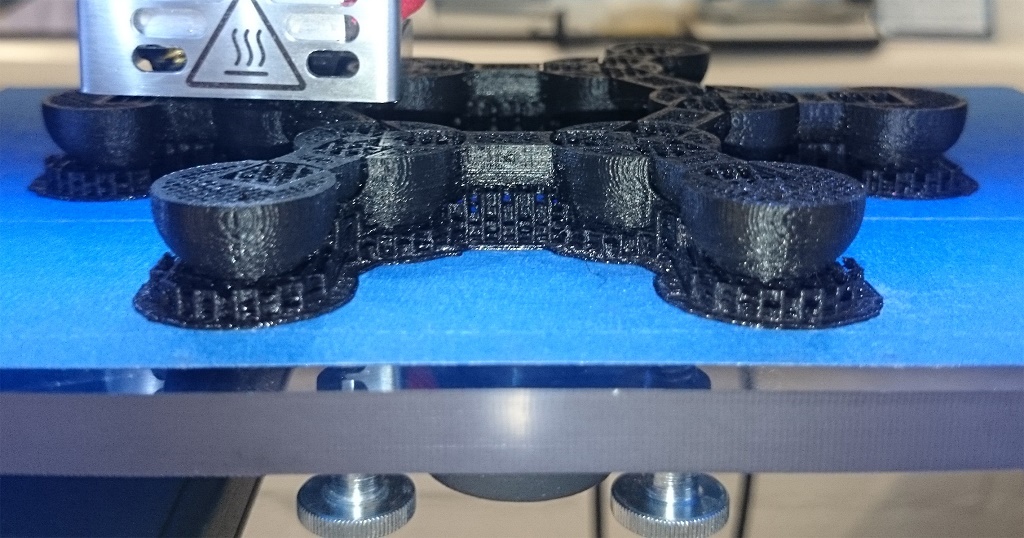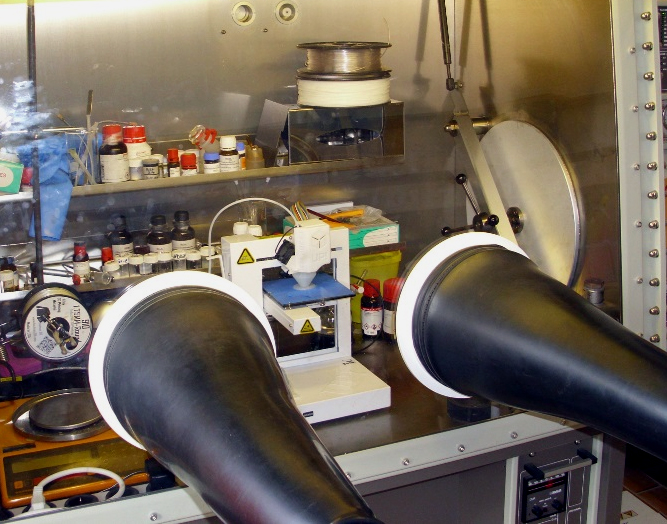
3D printing has developed towards a useful tool in laboratories for chemical, physical and biotechnological research. Typical applications for 3D printed objects are stopped flow microreactors, where uniquely optimized geometries of the reactor can be realized easily.
Researchers from the Institute of Organic Chemistry at the Clausthal University of Technology operated a 3D printer based on the commonly used Fused Deposition Modeling (FDM) technology within the oxygen- and water-free inert gas atmosphere of a glove box. Such glove boxes are routinely used to handle highly reactive and spontaneously inflammable reagents.
As a first result, the mechanical properties of FDM printed parts were found to be significantly improved, if the print was performed under inert conditions. Partly due to the suppression of oxidation processes, which leads to a better layer adhesion, and partly due to an impact on the crystallinity of the printed polymers, the elongation at break as well as the tensile strength were improved. These results have been published freely accessible and shall help for the development of improved FDM printers.
Reaction flasks and reaction cuvettes have been printed out of filaments commonly used for the FDM process such as polyamide. With a wall thickness of 0.12 inch, the printed flasks showed up to be highly pressure resistant (tested with 290 psi) as well as impermeable against oxygen and water. Additionally, they were stable against all common organic solvents. The main focus of the research was the 3D print of flasks and attached cuvettes with exactly the same geometry as the original counterparts made of glass and steel. During short pauses of the printing process, all required reagents and solvents had been inserted into the partly completed reaction flask. Subsequently, the printing process was finalized and a completely closed reaction vessel had been obtained. This procedure led to a reaction vessel, in which the whole synthetic procedure could be performed while at the same time analytical measurements could be realized through the 3D printed cuvette. Most common analytical methods such as UV/Vis, IR and NMR spectroscopy could be applied without significant interference from the matrix polymer. The concept and the geometries of the cuvettes have been published in a freely accessible paper.

In summary, it was possible to 3D print reaction cuvettes inside the inert atmosphere of a glove box and to fill them with highly reactive reagents during small pauses of the print. Subsequently, the flasks could be removed from the glove box and the reaction was monitored directly through the 3D printed cuvette without opening the flask or taking samples. After the reaction had been completed, the flasks were opened and the reaction product isolated without contamination from the printing filament. Recently, the application of the concept for modern palladium-catalyzed syntheses has been published.



